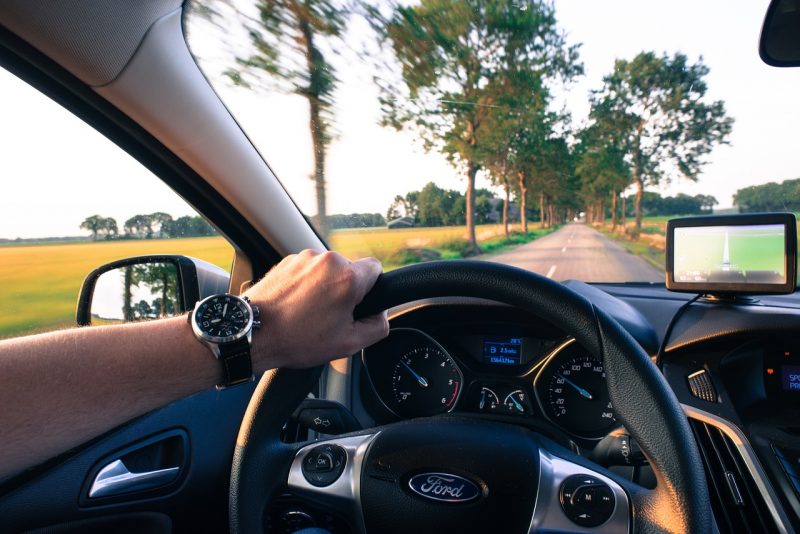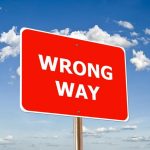熱心なあなたは、フォレックステスターやMT4をつかって日々、裁量トレードのスキルアップのためにトレード練習を実践していることでしょう。
しかしそれらFX練習ソフトで、いつも仮想・模擬トレードをしてばかりいませんか? もしかすると、それが原因で伸び悩んでしまっているかもしれません。
今回は、トレードスキルを着実に向上させていくためのお話を、お伝えしていきます。
裁量トレードのスキルは、練習によって向上する
熱心に練習されているあなたは、基本的に正しい道を歩んでいると言っていいと思います。
なぜなら裁量トレードというものは、「スキル=技能」を向上させることで、より継続的に勝ちやすくなっていくものだからです。
ですから基本的には、どしどし練習を重ねていって、スキルアップを進めていって欲しいと思います。
練習には、効果的な練習と、そうでない練習がある
さて、ここで何度も「基本的に」という表現をつかいましたが、それはどういう意味でしょう?
それは「あなたが効果的なトレード練習をしていれば」という条件があるからです。
つまり間違ったトレード練習を続けていると、いつまで経ってもトレードスキルは上達していきませんし、悪くすると、かえって下手になってしまう可能性もあります。
まちがった練習とは、どんなものか?
まず、間違った練習方法について。
それは「完成形となるトレードスタイルを使って、リアルな相場でいきなりトレードし始める」という方法です。
FXで具体的にいうと、いきなりお金をFX口座へ入金して、一応トレードルールに従う形でチャートを見て、ポジションをもって、レートの動きにあわせて利食いや損切りをして、こうして何度も実戦練習を繰り返してしまうことです。
これは練習になるどころか悪い癖が身についてしまい、後から治すのが大変になってきます。
しかし残念なことに多くのFXトレーダーは、こうしたリアルマネーをつかったトレードを「実戦的な練習」と称して、日々繰り返してしまっているのが現状です。
確かに「少額でもリアルなお金をつかうことで、経験値が積める」という理由も、理解できなくはないです。
しかし、それも「経験を積むに値するスキルが既に身についていればこそ」なのであって、何もスキルが身についていない段階で、いきなりリアルトレードで練習するというのは、あまりに無謀です。
自動車免許のストーリー

もし、あなたが自動車免許をもっているなら、教習所へ通っていたときのことを思い出して欲しいのです。
初めて自動車の運転席に座ったとき、どんな感じでしたか?
目の前のハンドルとメーター類、フロントガラスから見える景色、足元のペダル、その何もかもが初めてのものであり、ドキドキしていたと思います。
「おいおい、これを本当に自分が動かすのか……?」と、ビクビクしていたかもしれませんね。
マニュアル車の免許だったら、最初は半クラッチの練習から始めたはずです。
そもそも、ちょっと前へ動くということ自体がムチャクチャ難しい。
AT限定の免許だと、そういう苦労はなかったとしても、コースをゆっくり一周するのも緊張して大変だったはずです。
目線は道路にくぎづけになり、気がついたら右へ寄り、左へ寄り、フラフラとカーブを曲がり、肩なんかガチガチだったんじゃないでしょうか?
練習、練習、また練習
やっと普通に前へ進めるようになったら、つぎは交差点を曲がる練習です。
左折のときは巻き込み確認をして、右折のときは対向車や横断歩道に注意して、という具合です。
そうして交差点を曲がれるようになったら、つぎにはS字カーブやクランクを何度も通過して、車両感覚を身につけていきます。
さらには坂道発進や車庫入れといった、ちょっと変わった条件での運転の練習をみっちりやっていきます。
これだけやっても、まだ公道で練習することはできません。練習と合わせて交通ルールの勉強もしないとダメです。
こうしたことを何度も繰り返して、ようやく各スキルの統合を目指して、教習所のコースをひたすら走り続ける段階に入っていきます。
そうして、やっと「仮免許の試験」が受けられるのです。ここまで色々と練習してきても、まだ「仮免許」の、それも「試験」が受けられるだけなんです。
これに晴れて合格して、ようやく公道で練習することが許されるのです。
これが練習のあるべき姿
自動車運転というスキルをいくつものパーツに分けて、そのパーツひとつずつを練習していって、パーツがそろったら、ひとつのスキルへと統合していく──これが効果的な練習のプロセスです。
裁量トレードも同じなのです。
トレードのスキルをいくつものパーツに分け、練習していき、各スキルを統合していくのです。
こうしてみると、いきなりFX口座にお金を入れてトレードし始めるのがどういうことか、想像できるのではないでしょうか?
車を運転したこともないのに「お金はある!」といって、ポルシェやフェラーリを買って、いきなり乗り込んで、「これでどこでも好きに走り回る!」といって、近所のブロック塀に激突してしまい、あげくの果てには「自動車なんて危ない!」なんて言ってしまうのです。
トレードスキルを分解して練習しよう
裁量トレードのスキル向上も、教習所での練習と同じように考えてみましょう。
つまり、トレードスキルを分解してひとつずつ練習していき、徐々にひとつのスキルとして統合していくのです。
具体的には、チャート分析のスキル、エントリーやエグジットなどのポジション操作のスキル、平常心でトレードするメンタル面のスキルなどを練習していく必要があります。
また、個々のスキルは、さらにいくつものパーツのスキルに分けることができます。
例えば、チャート分析のスキルは──
- トレンドかどうかを判断するスキル。
- 目線を定めるスキル。
- 大きな時間軸のサポート・レジスタンスを見つけるスキル
- ダブルトップなどのチャートパターンを認識するスキル。
- 特徴的なプライスアクションを認識するスキル。
──等など、沢山のスキルに分かれます。
個々のチャート分析スキルについての記事がありますので、その中からいくつか紹介しておきます。



また、FXのメンタルスキルについて学んだり、問題を解消するのに役立つ本を紹介した記事もありますので、こちらも参考にしてください。

分解したトレードスキルの練習方法とは?
裁量トレードのスキルを分解できたとして、ではそれら各スキルをどのように練習していけばいいのでしょうか?
まず、練習の道具となるのはForexTester4などのFX練習ソフトです。これを準備することが練習のスタート地点になります。
参考記事 FX練習ソフトおすすめ6選/検証の定番&無料ソフト【2025年版】
参考記事 MT4の複数時間足チャートの検証&練習におすすめのインジケータ
練習の道具が整ったら実際に練習を始めていくわけですが、その具体的な練習方法は様々な分野の教育者や研究者らによって明らかにされています。
私が参考にして、実際にとても役に立った本を紹介します。

 (Kindle版あり)
(Kindle版あり)- ダグ・レモフ, エリカ・ウールウェイ, ケイティ・イェッツイ
- 練習法の名著が文庫版になって登場。
この『成功する練習の法則』には、効果的な練習とはどういうものかが解説されており、さらに、その効果的な練習をデザインして実践するためのノウハウがたっぷりと詰まっています。
これを読めばムダな練習やマズい練習をすることが避けられ、シンプルで効果的な練習をデザインして実践していくことが出来ます。
本書のエッセンスを少し紹介しましょう。
- 最大の価値を生む20%に集中して取り組む。
- 無意識にできるようになるまで徹底する。
- 得意分野を見つけて磨きをかける。
- 実戦練習ではなく、反復練習でこそ上達する。
- スキルを分離して個別に練習する。
- スキルに名前をつけて共有する。
このエッセンスを理解するだけでも、あなたのトレード練習は今日から変わるはずです。
現在、もしもあなたが実戦練習ばかりしているのであれば、この本を読んでみて、改めてトレード練習の方法をデザインし直してみてはいかがでしょうか。
もしも今の練習に行き詰まりを感じているのなら尚のこと、こうした役立つ研究成果を取り入れてみるべきです。
あなたの裁量トレードの練習が、実りあるものに変わることを願っています。
以上、FXのトレードスキルを分解して練習する方法とは?について、お伝えしました。
参考リンク 『成功する練習の法則―最高の成果を引き出す42のルール』
こちらの記事もおすすめです





